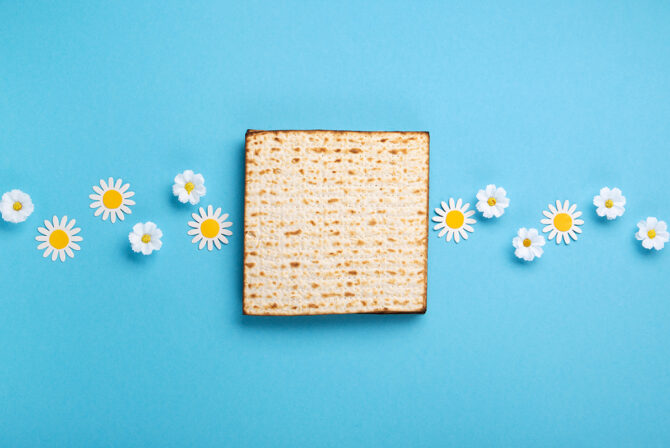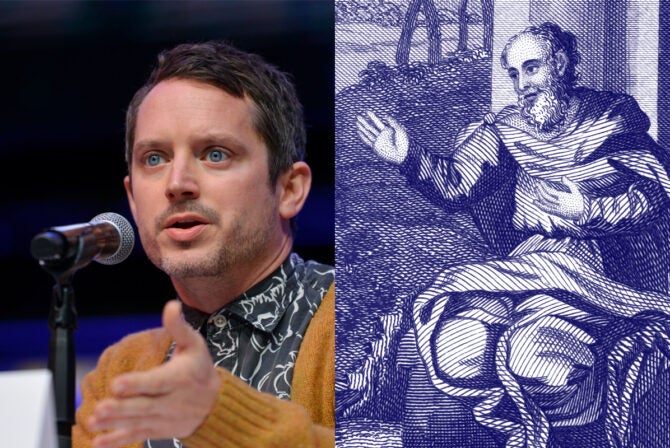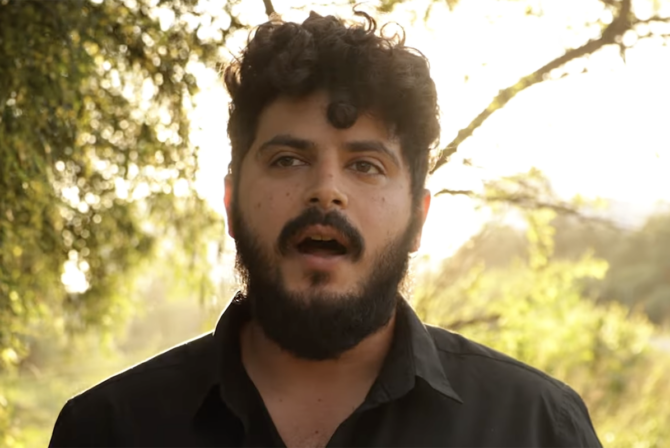Passover was three weeks after my father died, almost twenty years ago this spring. We held a Seder at our apartment on the Upper East Side, after standing in line with my Mom to buy a brisket on Madison Avenue. There were only the “immediates” in our family that year because we all felt so empty and unwilling to act as if we weren’t. We left a Haggadah at each setting, and placed the Seder plate and Elijah’s cup in the middle of the table.
We have used the same Haggadahs since my mother purchased them from Plainview Jewish Center when I was in Hebrew School. They are splattered with horseradish, wine and brisket stains from previous years. And they are also filled with notes from the Seder leader as to which sections of the story to include, which to skip, and who would read the selected portion.
For my entire childhood, my Grandpa Sam, with the heavy Russian accent, led our Seders. His notes say things like “washing the hand” [hands] or “eleviet [elevate] the matrsa [matzoh]” so that he could more easily communicate with his American born grandchildren. His handwriting was both elaborate yet stumpy, with curls and flourishes, but short on the page.
After anyone read, he would always say, “ve…rri gud, ” whether they struggled with the Hebrew or stumbled on the English. And, at the end of each Seder, he would read something he had written, usually in Yiddish, to mark the occasion and perhaps an upcoming family “simcha.” My father and his sister Honey would translate the gist of his sentiments for the kids.
My grandfather died in 1992, but seeing his notes next to the Hebrew brings me right back to their apartment in Queens; the smell of Grandma’s meat on the stove, the hard candies on the glass cart, the plush green velvet chair where we left our coats, and the salmon colored couches covered in plastic.
My father took over the role of Seder leader after my Grandpa, and the Haggadahs now also have notations from him. My father’s notes are just the names of family members written next to the portion that is to be read. His handwriting is identifiable by its rounded lines and letters that lean in different directions. Where my writing tends to have straight lines and edges, his marks are softer.
There is nothing that makes my father feel more present than his writing on a page. Maybe it is because handwriting is a direct result of moving one’s hand to create the mark that remains. He may have been gone for almost twenty years, but the notes in the Haggadahs are just as he left them so many Seders ago.
After my father died,, my mother started hosting and leading the Seders in Manhattan, and she also made notations. Her handwriting is feminine and pretty, with soft loops and consistent slants. She seemed to follow my Dad’s lead, assigning most of the excerpts that he picked.
No matter who the leader was, the notes also reflect the people who came to the Seder; some of them were just passing through our family, and some were constants, at least for a time. My cousin’s first fiancé’, who stole all her money during their engagement, is written next to a couple of passages but scratched out with a pen; a couple who my brother was close to for a while, and who are now on the periphery of his friendships, are also there.
And there is also Honey, my aunt, who was unlike the other Jewish ladies in our family. She had strawberry blond hair, delicate features, and wore clothes the way I imagined they should look. Her style was classic, marked by coatdresses or a crisp white blouse, camel colored pants and good and expensive shoes.From the time I was little, she listened to me as if my thoughts and ideas mattered to her.
My Aunt Eleanor is also clearly written next to a number of paragraphs. She had a pageboy haircut that we watched change from brunette, to salt and pepper and finally completely white. I can see her with a cigarette in hand, a drink nearby and a sense of humor that left us all laughing.
My husband Andy appeared at some point, first as a boyfriend, his name next to the excerpts for the wise son. And before long, there were the names of the grandchildren, Sam, Hannah, Emily and Ben. Sam was the only grandchild my father got to see, so only Sam’s name is written in his handwriting.
There is no Haggadah with Sarah written in it. She was my brother’s first wife, who broke his heart so badly that we were unsure he would ever be the same. Her name is not even scratched out anywhere. I’ve looked. My parents must have gotten rid of any book that had her name in it. Fortunately, there are now passages that say “Michelle” my brother’s wife for the last twenty one years and Emily and Benjamin’s mom.
There aren’t as many notations from my Mom because Andy and I started hosting at our house, once we left the city. We tend to wing it regarding the reading assignments, so our handwriting is not evident in the books, nor are the guests who happen to be joining us that particular year.
But looking through these old margin notes, I think Andy and I should rethink that laid back approach. Those notations tell a story about both our growing and contracting family. Without those marks left on the page and the handwriting of the person who made them, the family that follows will be left to fill in even bigger blanks.







